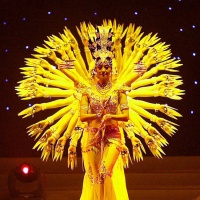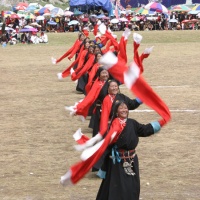- Home Page
- Fact Tours
Our sample tour itineraries of China and China travel packages are sorted by theme and available at competitive prices, you can browse what tours are right for you for your trip to China.
Popular China Tour Packages

Custom Tour Packages to China and Ask Our Experts for Free Enquiry !
- Coach Tours
- Destinations
Beijing, the capital of China. Its art treasures and universities have long made it a center of culture and art in China.
Beijing Top Attractions
Beijing City Tours
Best China Tours with Beijing
Shanghai, the cultural and economic center of East Asia. It renowned for its historical landmarks, the extensive and growing skyline.
Shanghai Top Attractions
Shanghai City Tours
Best China Tours with Shanghai
Xi'an, having held the position under several of the most important dynasties. It is the top destination to explore the facts of Chinese history.
Xi'an Top Attractions
Xi'an City Tours
Best China Tours with Xi'an
Huangshan boasts its culture, beautiful rivers, villages and mountains. It's home to 2 UNESCO World Heritage Sites and the Mecca of photographers.
Huangshan Top Attractions
Huangshan City Tours
Best China Tours with Huangshan
Sichuan is the cradle of the Shu culture, panda, mahjong, teahouse and spicy food. The province ranks first in China by number of UNESCO World Heritage Sites. It is called "the Heaven of Abundance".
Sichuan Top Attractions
Sichuan Tour Packages
Best China Tours with Sichuan
Yunnan, literally means the south of colorful clouds, due to its beautiful landscapes, mild climate and diverse ethnic cultures and traditions, is one of China's major tourist destinations.
Yunnan Top Attractions
Tibet, the nearest land to the sky, is known for its breathtaking landscape, splendid culture, art, buildings, and mysterious religions.
Tibet Top Attractions
Tibet Tour Packages
Best China Tours with Tibet
Explore the lost civilizations by riding a camel! Travel across the Gobi and the desert, and over the high mountains. Our Silk Road tours including different sections of the Silk Road in China.
Silk Road Top Attractions
Silk Road Tour Packages
Best China Tours with Silk Road
Guilin, an internationally-known historical and cultural city, has long been renowned for its unique karst scenery. Its vicinities are the paradise of hiking, caving, rafting, biking and countryside exploring.
Guilin Top Attractions
- China Facts
- China Hotels
- Travel Photos
Arts and Crafts
- Chinese Silk
- Chinese Sculpture & Carving
- Chinese Quyi
- Chinese Shadow Puppet Show
- Chinese Pearls
- Chinese Paper Cut
- Chinese Painting
- Chinese Music
- Chinese Lacquer Ware
- Chinese Wushu or Kung Fu
- Chinese Jade
- Chinese Games
- Chinese Dances
- Chinese Culture
- Chinese Ceramics
- Chinese Calligraphy
- Ancinent Chinese Bronze Vessels
- Chinese Acrobatics
Chinese Dances
China dance, as a comprehensive art form, is an important part of the ancient Chinese term "Yue" which includes several elements such as poems, songs, dances and music. Chinese dance has its own unique vocabulary, meanings, and ordered structure that enable a dancer to fully express his thoughts and feelings with ease and grace.
The art of Chinese dance traces its origins to a time before the appearance of the first written Chinese characters. The ancient dance of China went through embryo and childhood stages in a primitive society. It became ripe around the Bronze Age. A study of ceramic artifacts with depictions of dancing figures reveals that people of the Neolithic Yangshao culture of around the fourth millennium B.C. already had choreographed group dances in which the participants locked arms and stamped their feet while singing to instrumental accompaniment.
 Through further development in the Feudal society, especially after the Han Dynasty, the dance culture reached its peak in the Tang Dynasty. After the Song Dynasty, it entered a transformation period as a result of the changes in the entire art field.
Through further development in the Feudal society, especially after the Han Dynasty, the dance culture reached its peak in the Tang Dynasty. After the Song Dynasty, it entered a transformation period as a result of the changes in the entire art field.
Chinese dance possesses numerous types. Each nationality, each region and each type of dance carry its own folk dance forms with unique features and flavors. Folk dances directly reflect the lifestyles and customs of a people, and though their are numerous folk dances, each and everyone is an invaluable part of China's cultural heritage. Yet it is also easy to discover that Chinese dance is actually an integral body with common spirits and views. The frequent communication and assimilation between different ethnic groups and regions, the different dance fields between entertainment for others and self-entertainment, professional and amateur, religious and worldly, royal and grassroots, etc., have all melted and become one in another. Dances for rituals, performances, social contacts, education, clans, trades, etc., all take up an important and indispensable place in the garden of dances....
Here is a list of distinctive dances that are worth appreciation and enjoyment at up most.
Classic Folk Dance - Fans and ribbons may be the stereotypical image that appears in many of our minds when we hear about Chinese cultural dance; in fact it mean much more than images...
Popular Yangge - During the season in winter, people of Han nationality in villages in northern Shanxi begin doing the yangge dance and waist drum dancing in order to greet Spring Festival (first day of the first lunar month) and Lantern Festival (15th of the first lunar month).
Uygur Folk Dances - Uyghurs in Xinjiang are known for their skill in singing and dancing on festive days and at gatherings of friends and relatives. Their lively dances demonstrate diligence, bravery, openness and optimism and distinguished by head and wrist movements. Their clever coordination is enhanced by the typical posture of tilted head, thrust chest and erect waist. The dances, Sanam in particular, express the Uygurs' feelings and character.
 Tibetan Dances - Nearly Tibetans can sing anytime for any event and dance at festivals, weddings, gatherings and during their spare time. From historical writings we can see that more than a thousand years ago folk religious and sorcerers' dances were very popular in Tibet.
Tibetan Dances - Nearly Tibetans can sing anytime for any event and dance at festivals, weddings, gatherings and during their spare time. From historical writings we can see that more than a thousand years ago folk religious and sorcerers' dances were very popular in Tibet.
Miao Dance - The Miao (also known as Hmong) people of southwestern China developed a lively form of antiphonal, or responsive, singing and competitive dance.
Dai Dances - The folk dances of Dai nationality enjoy not only wide popularity but great diversity. Most of them imitate the movements of subtropical creatures. Known as Galuoyong, Fanluoyong or Gananyong, Peacock Dance is the best loved dance of the Dais.
Gaoshan Dance - Due to the influence of the their island environment, the aborigines of Taiwan created hand-holding line dances as part of a harvest ritual.
Ballet in China - The development of modern Chinese dance has taken on a dynamic personality. Usually, young people going into dance study ballet and modern dance first, then they study the technique and syntax of traditional Chinese dance. From there they seek out new directions for Chinese style body expressions and movements with an open mind for experimentation. Since about 1970, the original and unique compositions of young dancers have occasioned a renaissance in Chinese dance.
General types of chinese dance
民间舞蹈: Folk dance
踏歌: Tage (beat time to a song with the feet; dancing accompanied by singing)
秧歌: Yangko dance
腰鼓舞: Waist drum dance
花鼓灯: Flower-drum lamp dance
狮子舞: Lion dance
龙舞: Dragon dance
花灯: Festive lantern dance
安代舞: Andai dance- The dance originated from Horqin Grassland (Inner Mongolia) in early years of the Qing Dynasty (1644-1911).
热巴: Reba ance - Reba dance is a Tibetan local art that involves performance of Rap, singing, dancing, acrobatics and drama. In the old days, the dance used to be
performed by the strolling family troupes.
赛乃姆: Sainaimu (this dance is prevalent throughout Xinjiang)
扁担舞: Shoulder pole dance
芦笙舞: Lusheng dance (Lusheng is a kind of reed-pipe wind instrument of some Chinese ethnic groups)
阿细跳月: The Moonlight Dance of Axi (Chinese pinyin: Axi Tiao Yue) - popular in Lunan, Luxi, and Mile of the Yunnan Province, is a kind of mass dance among axi and
Sani people of the Yi nationality.
农乐舞: Farming dance
孔雀舞: Pavane
雅舞: Ritual dance
祭祀舞蹈: Sacrifice dance
扇子舞:Fan dance
剑舞: Sword dance
宫廷舞蹈: Court dance (Today, the most famous of the court dance is the Tang Dynasty Music and Dance Show)
Questions & Comments
Home | About Us | Partnerships | Terms & Conditions | Privacy & Security | Payment Guide | Resource Links| Sitemap
Email: contact@chinafacttours.com, Tel: +86-773-3810160, Fax: (+86) 773-3810333
Copyright © 2008-2020 China Fact Tours. All rights reserved
![]()









